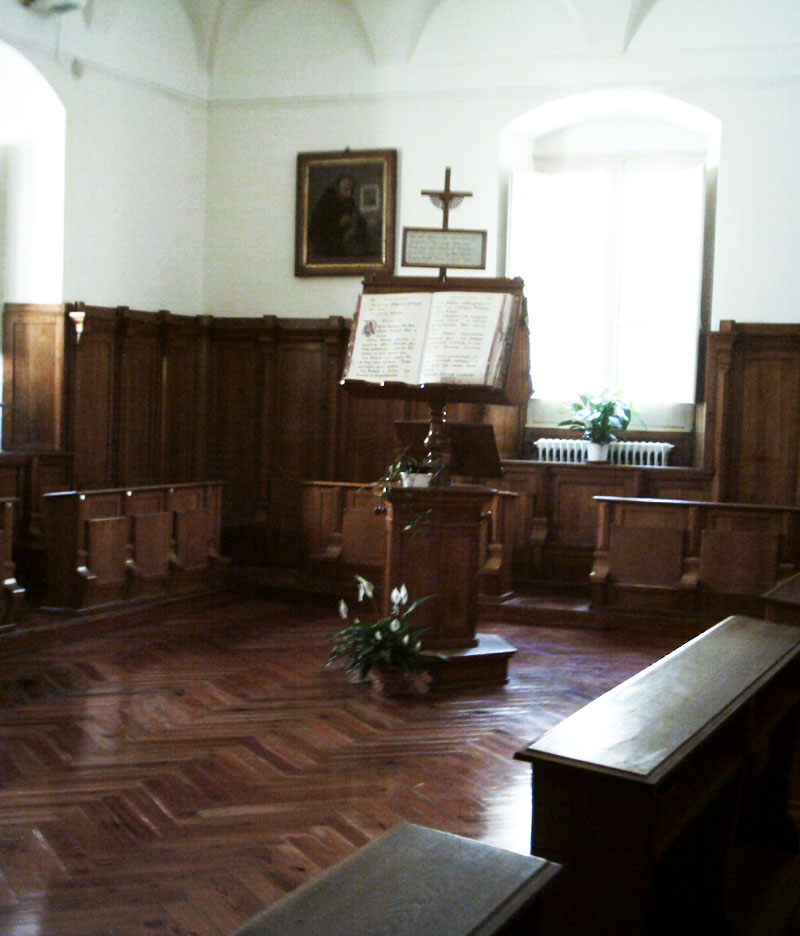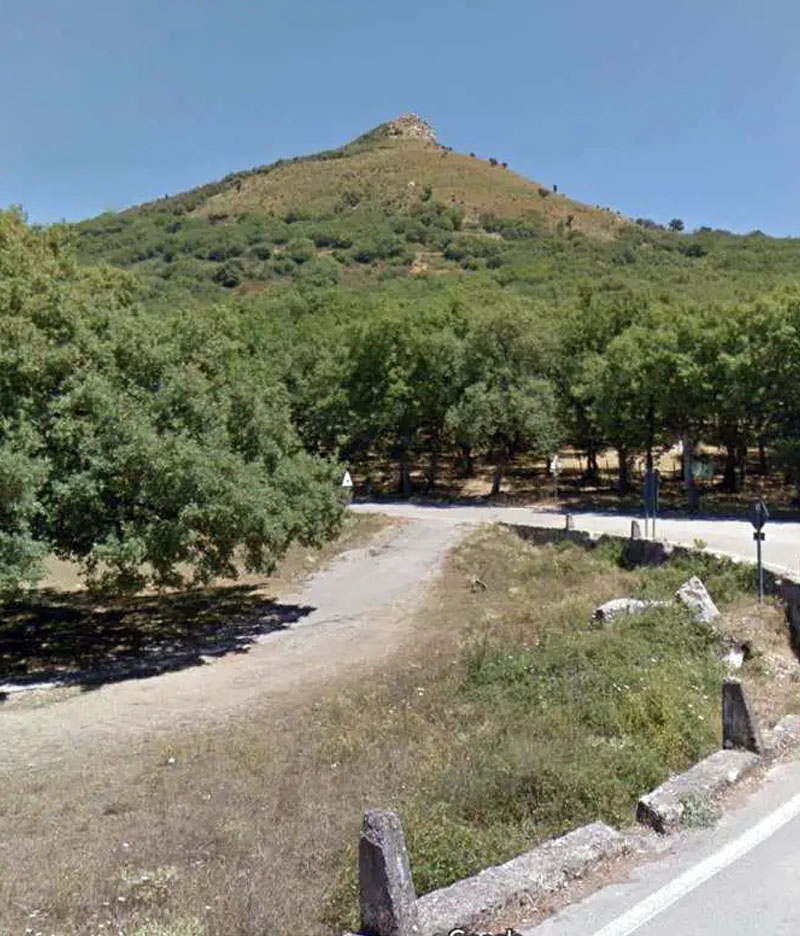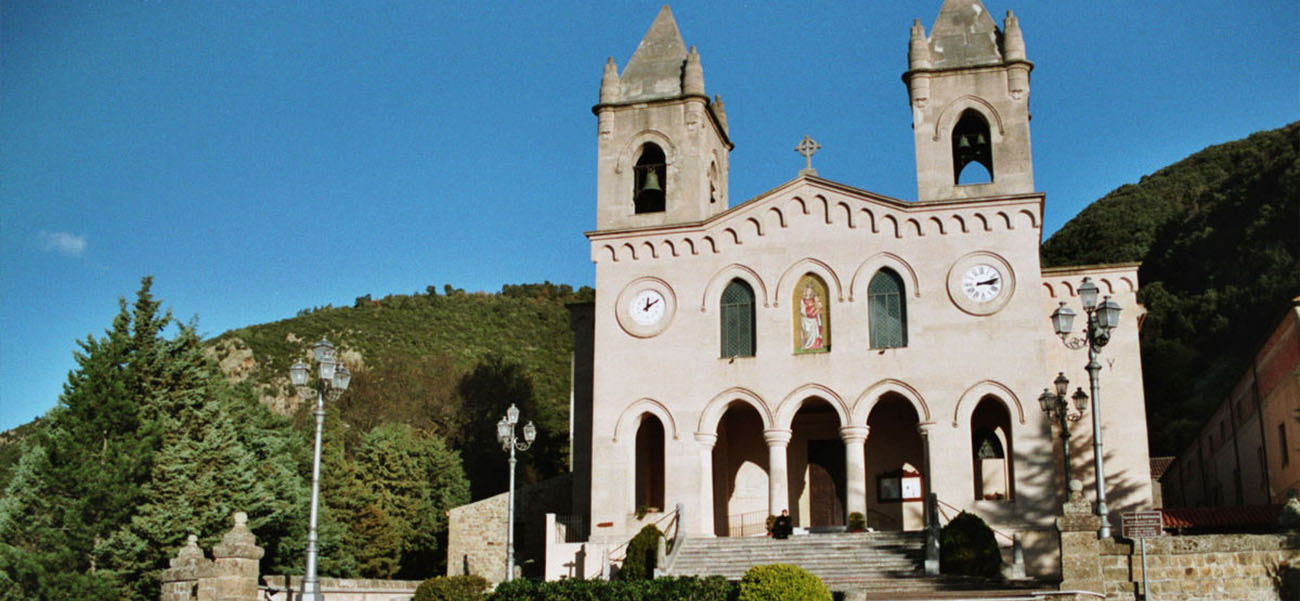Your basket is currently empty!
Gibilmanna
Gibilmanna is located on the slopes of Pizzo Sant’Angelo at an altitude of 795 metres a.s.l., inside the Madonie Park. In the place there is the Sanctuary of Gibilmanna, the Fra Giammaria da Tusa museum, with the annexed library, while the Benedict monastery founded by St. Gregorio Magno and the small church dedicated to St. Michele Arcangelo no longer exist.
In Norman documents, the locality is mentioned with the toponymies “Gibilmagne” and “Zibelmanno” interpreted as the corruption of “Jubileo Magno” concerning the celebration in honour of St. Gregorio Magno. However, the western use of the term “giubileo” seems to date back to a time period after the first attestations of the name of the sanctuary.
Another possibility refers to the Latin name “jubilum” which means “joy”. Actually, the name seems to be of Arabic origin, from the expressions “Gebel-El-Man, Gibel-El-Mann o Gibel-El-Mannat, Gibel-El-Iman”, in which the term gibel/gebel means mountain, while the second term is interpreted as a prohibition, or manna.
“Monte del divieto” (Mount of prohibition) could refer either to the vegetation that made the way difficult, or to the prohibition for pilgrimages to the Christian sanctuary, imposed by the Arab conquerors. “Monte della manna” (Mount of manna), instead, would refer to the presence of ash trees that produced manna, or again “Monte della grazia” (Mount of Grace) or the divine gift, with reference to the sanctuary itself.
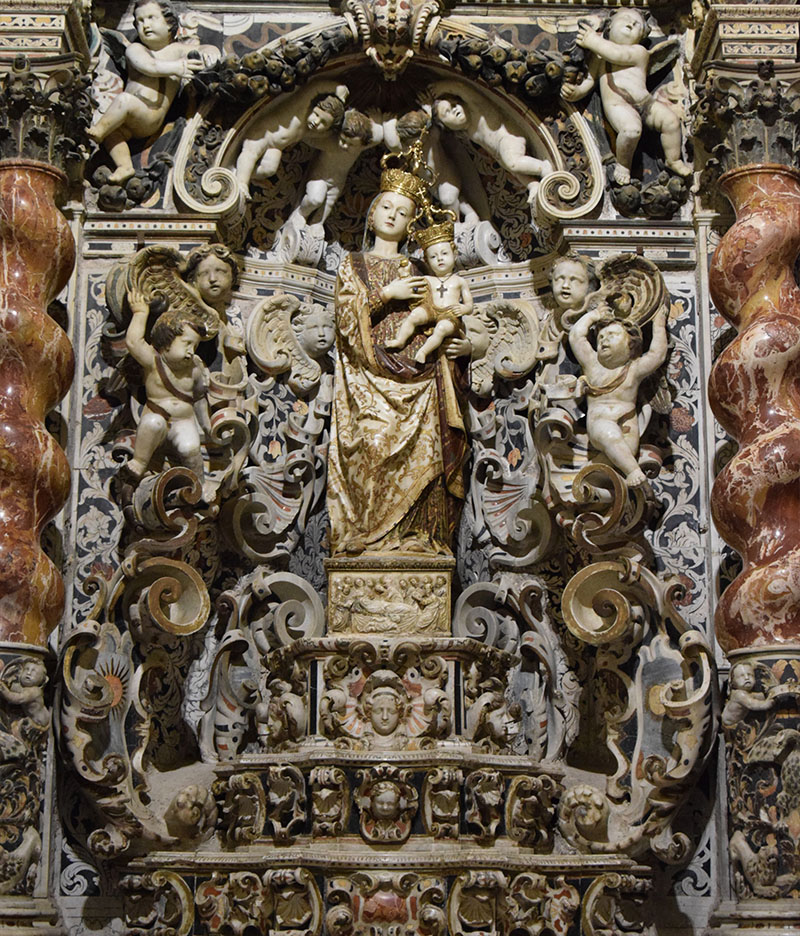
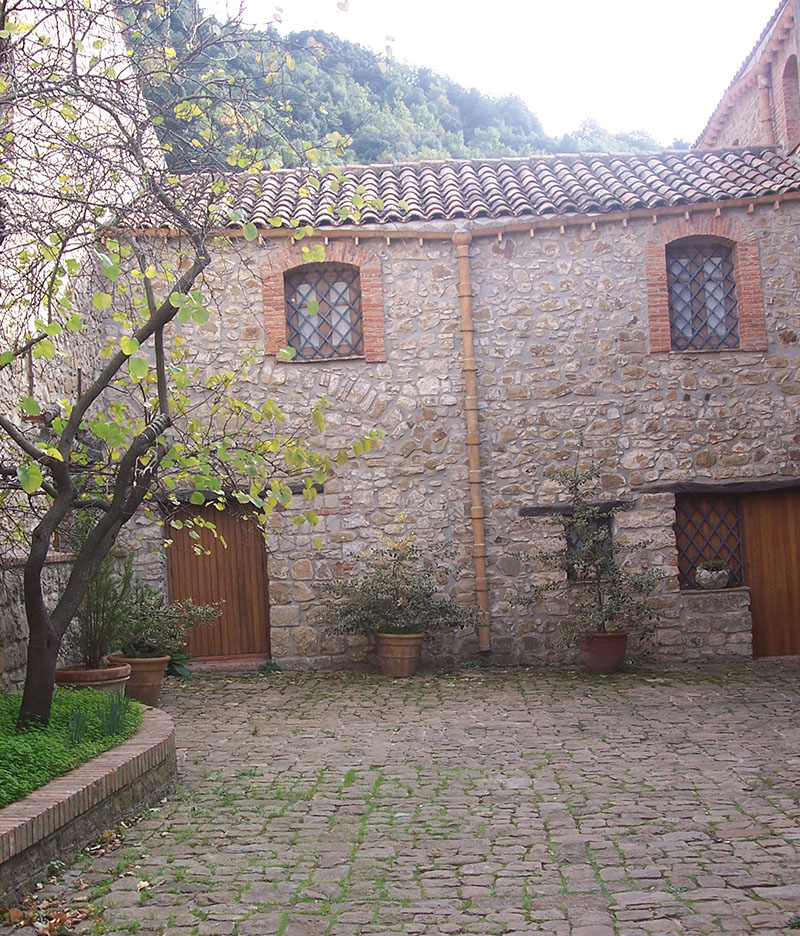
The Legend
According to the popular legend handed down for centuries, the beautiful image kept in the Sanctuary would have arrived there for divine will. It is said that the Virgin Mary appeared in a dream to a Capuchin friar and invited him to go to Roccella to fetch a precious effigy from the sea. It was Easter day in 1534, when during a storm, a ship carrying a statue of the Madonna and Child found shelter in the medieval village of the castle of Roccella.
The Capuchin friar wrapped it with a wooden blanket, and had that statue transported on a cart pulled by oxen left free. Immediately those oxen, guided by divine will, took the road towards the Madonie, and after a few days they reached Gratteri, welcomed by the joyful population. They kept going, however, not without making a stop where still today there is a Tribune called “A Tribbuona Ranni”; it was named like that by people who needed to distinguish it from a smaller “Tribunedda” also on the road from Gratteri to Gibilmanna.
After having rested, the animals continued their journey until they stopped definitely on the promontory where today stands the Sanctuary of Maria SS. of Gibilmanna. Nevertheless, this legend is confirmed by history. It was precisely in 1535 that Father Sebastiano Majo from Gratteri, one of the first followers of the Capuchin reform, settled in Gibilmanna and founded the church and the Capuchin convent.
The humble Friar lived in poverty and holiness so much that in 1576, during a celebration of a Mass in the old church, he had a mystical apparition of Jesus crowned with thorns, who invited him to paint him. Father Sebastiano, using colours of the pounded plants of the territory, painted the artwork which is currently exposed in the Sanctuary.
It seems that in the convent the Hermit Giuliano de Placia from Misilmeri, whose cell seems to have been placed in the trunk of a chestnut tree, also lived there. His name can be read on the inscription on the pedestal of a venerated statue of the Madonna attributed in the 19th century to Antonello Gagini (“Julianus de Placia de terra Musumeri fieri me fecit” on one side and “fu fatto in tempore di Presti Miceli Senaturo Chapelano” on the other).
Inside the Sanctuary there is also the ancient wooden Crucifix that, according to the legend, spoke to Father Ivone from Messina and invoked him saying: “Qui governa mia Madre. A lei rivolgi le tue preghiere” (“Here my Mother rules. Address your prayers to her”).
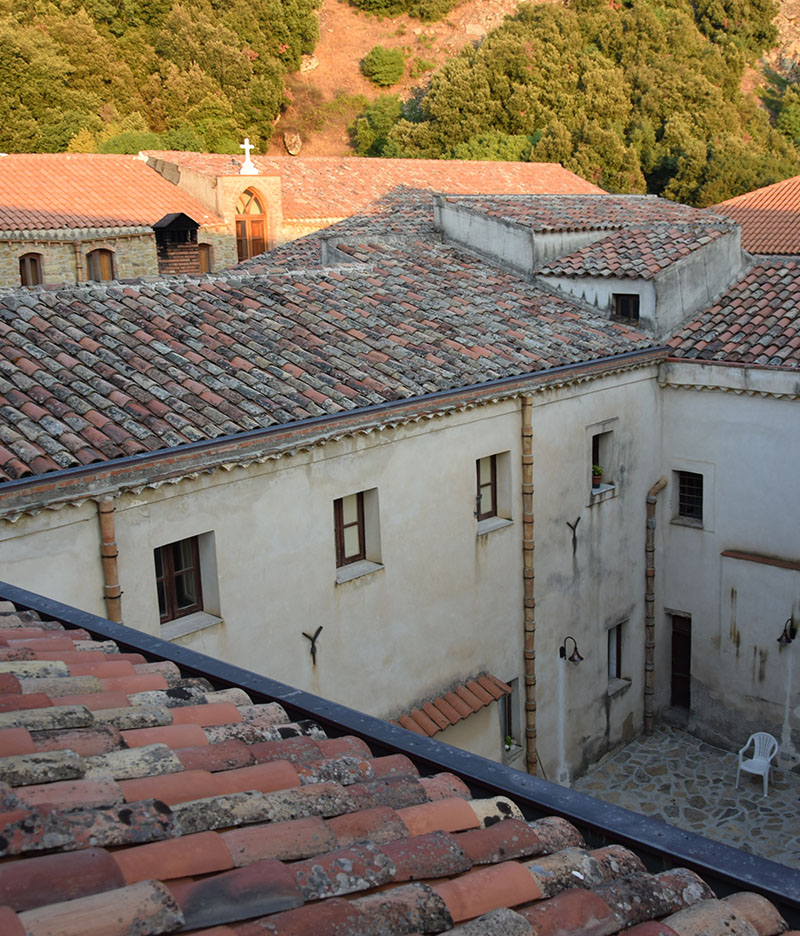
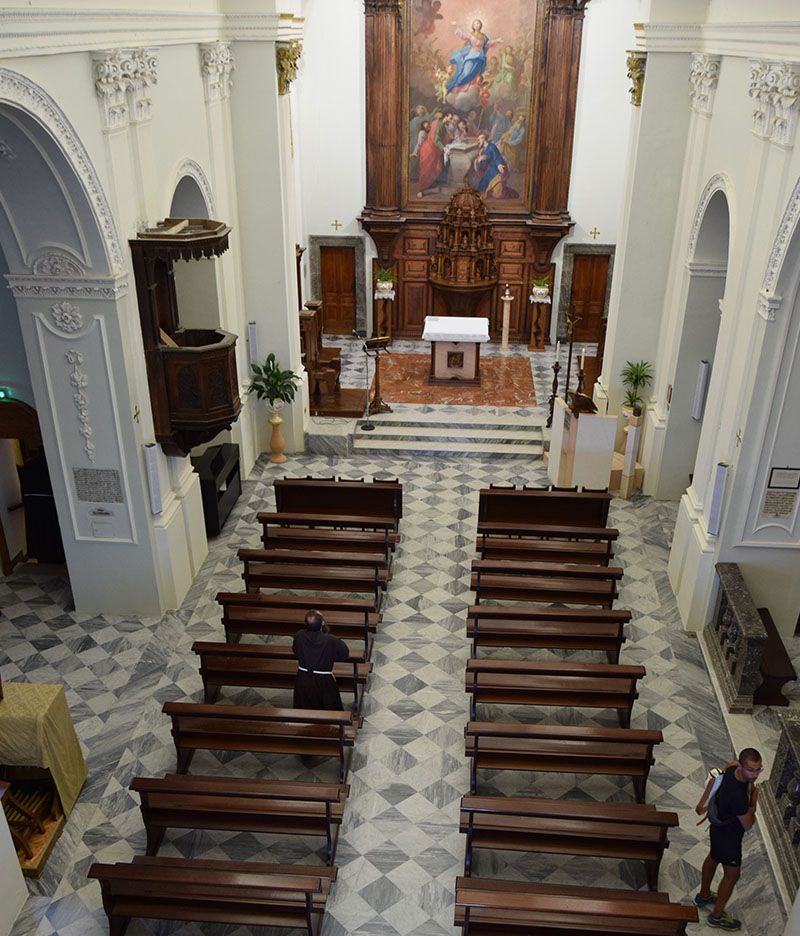
The History of the Sanctuary of Gibilmanna
Situated along the slopes of Pozzo D’Angelo, the Sanctuary of Gibilmanna has attracted for centuries many pilgrims from all over Sicily. It is a place that emanates spirituality and that encourages people to gather and pray. The Sanctuary and the annexed convent are the results of interventions made over time.
According to the tradition, not supported by historical sources, the monastery was one of the six founded in Sicily in the 4th century by Pope Gregory the Great. It was probably abandoned and went into ruin after the Arab domination. In 1535 the church, destination of numerous devotees to Our Lady, was assigned to the Capuchins, who rebuilt some rooms of the old convent.
The new convent was built between 1619 and 1624. In the same years the new adjacent church was built, and it was larger than the ancient one, in order to welcome the increasing number of pilgrims who arrived there to venerate the Virgin Mary. The church, in the shape of a Greek cross, had undergone some changes over the centuries; the last one, at the beginning of the 20th century, involved the main facade that was rebuilt in neo-gothic style.
Once inside, what catches our attention is the chapel of the Madonna. There we can find an imposing baroque altar in mixed marble made by Baldassarre Pampilonia in the second half of the 17th century. At the beginning, the work was made for the cathedral of Palermo, but having remained in the warehouses, it was put up for sale and bought by the Capuchins of the convent of Gibilmanna in 1785. The entire architectural apparatus is rich in:
- putti;
- angels;
- scrolls;
- shelves;
- statues;
- a very rich entablature;
- two twisted columns.
In the centre of the altar there is the highly valuable statue of the Madonna and Child, dated back to 1534 and attributed to Antonello Gagini. On the sides of the two statues of S. Giovanni Battista and S. Elena, dated about 1543, attributed by Gioacchino Di Marzo to Scipione Casella and Fazio Gagini respectively.
At the base of the altar lies the remarkable antependium of mixed marbles rich in architectural and floral decorations. In the main altar stands a painting of the Assunta and at the base an interesting wooden case of 1710 made by the sculptor Pietro Bencivinni from Polizzi Generosa.
The work, with a pyramidal structure, is rich in medallions, angelic heads and scrolls with half-busts, probably dedicated to saints dear to the clients. The first two levels are enlivened by a series of niches separated by columns, with a series of saints that include the Immaculate Conception, in the centre, St. Bartholomew and St. Clare, at the sides, St. Francis and St. Anthony of Padua, below. More recent is the little door of the tabernacle, which is the result of an intervention made in 1915.
Outside the church we can find the museum and the annexed library which are located in the premises of the convent once used as stables, storehouse and forge, carefully restored and refitted in the last years of the 20th century. The museum is divided into 10 rooms and collects works of art that come from the Capuchin convents of Castelbuono, Pettineo, Tusa, Geraci Siculo.
We can fin on display some finely embroidered sacred vestments, true masterpieces of Sicilian art; a series of paintings that include a six-compartment polyptych of the 17th century by Friar Feliciano from Messina, known as “the Raffaello dei Cappucini”; wooden works, including two interesting polychrome wooden statues of the 16th century that show the Madonna and St. Joseph, that probably are the only surviving pieces of a nativity scene; wax statuettes; ex-voto; an interesting statuette of the Pietà, attributed to sculptor Jacopo del Duca from Cefalù, collaborator of Michelangelo; a pipe organ marshes of the 17th century, the only example in Europe according to scholars. There is also a rich anthropological section where you can collect the working tools of the Capuchins.
Next to the museum there is a library extraordinarily precious for its quality. There are several incunabula, 16th, 17th and 18th century texts, many of which are rare. Finally, the 17th-century catacombs in the underground of the church are worth a visit. There, inside 34 niches, now emptied of the embalmed bodies of the religious, that since they were in a bad state of conservation were reassembled in an ossuary, interesting reliquaries are on display, that even though they are made with “poor” materials, they testify to the great devotion and creativity of the cappuccinos.
Piana delle Fate/Pianetti
The Pianetti picnic area is located on the road from Gratteri to Gibilmanna. After about 5 km, at the junction of “Piana delle fate”, you will find a wide clearing among woods of downy oaks and wild pear trees. It is not far from the coast and neither from the beaches of Cefalù, and for this reason it is also a nice “alternative” destination in some particularly sultry summer days, even for those who stay on the seaside. There are numerous paths that branch out from the plain and lead to the surrounding peaks. The woods are also rich in fruit and mushrooms.
